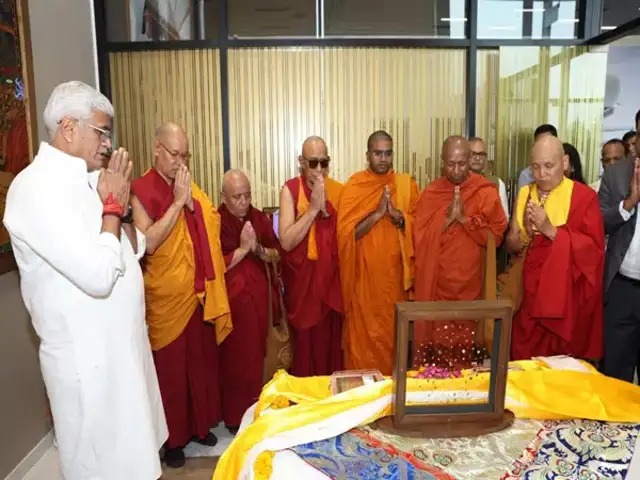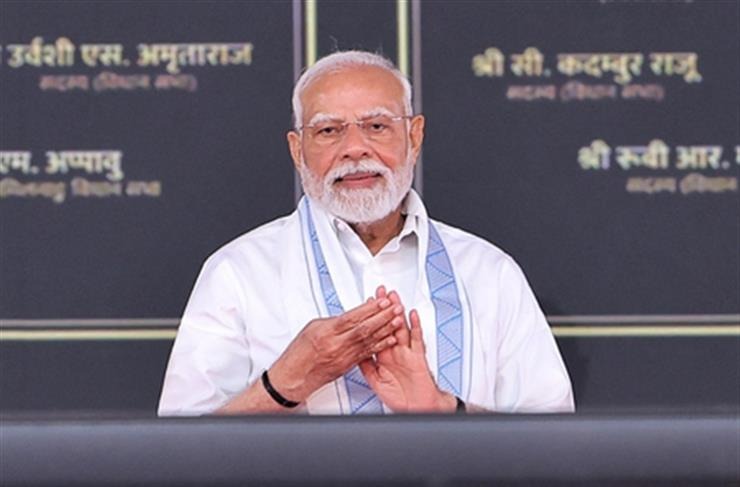
Follow WOWNEWS 24x7 on:

Introduction: A Cultural Homecoming Rooted in Diplomacy and Determination
In a landmark moment for India’s cultural heritage, the sacred Piprahwa Gems—believed to be linked to the mortal remains of Lord Buddha—have returned to Indian soil after 127 years. This historic repatriation, announced on August 1, 2025, was made possible through a rare and exemplary public-private partnership between the Government of India and Godrej Industries Group. The gems, unearthed in 1898 from a stupa in Piprahwa, Uttar Pradesh, had been held in private hands abroad and were recently listed for auction at Sotheby’s Hong Kong.
Key Highlights from the Repatriation Effort
- A collection of 349 sacred gemstones was acquired by Indian industrialist Pirojsha Godrej
- The gems were originally excavated by British engineer William Claxton Peppé in 1898
- The Ministry of Culture intervened to halt a Sotheby’s auction scheduled for May 7, 2025
- Legal notices and diplomatic pressure were applied to prevent the sale and secure the relics
- The gems will be loaned to the National Museum in Delhi for a five-year public exhibition
The Journey of the Piprahwa Gems
- Discovery and Dispersal
- In 1898, Peppé unearthed a Buddhist reliquary containing bone fragments and jewels believed to be associated with Lord Buddha
- While some items were sent to the Indian Museum in Kolkata, over 300 gems remained in the Peppé family’s private collection
- These relics were passed down through generations until Chris Peppé, the great-grandson, listed them for auction in 2025
- Auction Controversy and Legal Grey Areas
- Sotheby’s estimated the collection’s value at over $100 million
- India’s legal claim was complicated by the fact that the relics were excavated on British-allocated land and predated the Antiquities and Art Treasures Act of 1972
- Despite this, the Ministry of Culture, Archaeological Survey of India, and Consulate General of Hong Kong coordinated efforts to halt the auction
- Public-Private Partnership in Action
- Industrialist Pirojsha Godrej stepped in to acquire the collection, allowing the government to avoid direct commercial purchase
- This approach preserved ethical boundaries while ensuring the relics’ return
- Godrej agreed to loan a large portion of the collection to the National Museum and display the entire ensemble for three months upon arrival
Cultural and Spiritual Significance
- The Piprahwa Gems date back to the Mauryan Empire, around 240–200 BCE
- They include amethyst, topaz, pearls, and other sacred offerings believed to have been buried with Buddha’s remains
- Their return is seen as a reaffirmation of India’s spiritual legacy and its historical ties to Buddhism
Government and Public Reactions
- Culture Minister Gajendra Singh Shekhawat hailed the effort as a proud moment for India
- Prime Minister Narendra Modi called the repatriation a joyous day for India’s cultural heritage
- The initiative aligns with India’s broader mission to reclaim lost artefacts and celebrate its ancient legacy
Looking Ahead: Display and Preservation
The gems will be formally unveiled in a special ceremony and placed on public display at the National Museum in Delhi. The Indian Museum in Kolkata, which houses other parts of the Piprahwa relics, will also participate in a joint exhibition. This collaborative showcase will offer citizens and global visitors a rare opportunity to witness one of India’s most spiritually significant archaeological treasures.
Source: Indian Express






